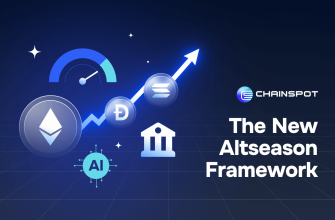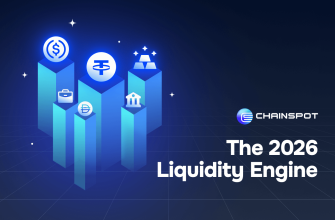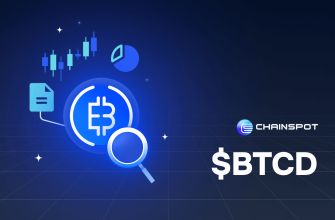Quick read: Plasma pulled in $500 m in USDC and USDT in five minutes at deposit opening, then upped the cap to $1 b after whales flooded the vaults. The token is XPL, not live yet. It will launch together with a Solana‑style Layer‑2 that prices gas in dollars. This guide (≈3 600 words) breaks down what happened, why stable‑denominated chains are gaining steam, and where tools like Chainspot slot into the flow.
1. What Plasma Really Is
Plasma isn’t the 2017 Ethereum scaling proposal; different crew, new idea. This Plasma aims to be a stablecoin‑first rollup that settles to Bitcoin but runs a Solana‑compatible VM. Zero‑fee USDT transfers, fast blocks, USDC stake. The team claims Bitcoin security via a trust‑minimized bridge plus BFT consensus for speed.
- Token: XPL. Supply 1 b. No price during deposit; users sent stables one‑to‑one for points.
- Goal: create a chain where gas is paid in a dollar unit, not in XPL. XPL soaks up fee revenue and governance.
- Backers: early angels include Peter Thiel’s Founders Fund and Paolo Ardoino of Tether.
2. The ICO Numbers
- June 9: Deposit vault opens with $250 m cap—fills in three minutes.
- Cap lifted on the spot to $500 m—fills again within ten.
- June 11: Team doubles cap to $1 b after community vote.
- Wallet count: ~1 100 unique addresses; median deposit $35 k.
- Status: Vault closed; token, chain, and airdrop slated for Q3 Mainnet.
Critics say whales and bots dominated; gas wars on Solana priced out smaller wallets. Still, raising half a billion in stablecoins during a choppy market turned heads.
3. How the Sale Worked
- Users bridged USDC or USDT into the Vault contract on Solana.
- Each dollar minted one XPL Point.
- When mainnet launches, points convert 1:1 to liquid XPL.
- Early depositors earn a 1.1× multiplier; whales got no extra boost.
- Funds sit in a multi‑sig; auditors EY + Certik signed off on chain proofs yesterday.
Tip: If you missed the window, keep some dry powder on a fast chain. The team hinted at a second vault for public beta. Use Chainspot to bridge USDC from Ethereum to Solana in a single hop and pay <$3 total gas.
4. Why a Dollar Pegged Token Sale?
- Fear of volatility. Post‑LUNA PTSD is real. A pegged raise calms nerves.
- Clear accounting. Treasury starts with real dollars, easier for on‑chain reporting.
- Regulatory optics. They market XPL as a “tokenised network equity,” not a money substitute. Whether the SEC buys that is unknown.
But the trade‑off is upside perception. Price will likely float at $1± some yield factor. Bulls must value revenue share + staking APY, not meme pumps.
5. Stable‑Backed Chains: Bigger Picture
Plasma joins a club:
| Chain | Gas Token | Launch Year | Focus |
|---|---|---|---|
| Noble (Cosmos) | USDC | 2023 | Inter‑chain stable rails |
| Canto NOTE | $1‑soft‑peg NOTE | 2024 | DeFi public goods |
| Ethena L2 (proposed) | sUSDe | 2025* | Synthetic dollar perps |
| Plasma | $1 gas, XPL rev‑share | 2025 | Stablecoin DeFi hub |
Noble issues native USDC across Cosmos—same “gas in dollars” vibe. Canto’s NOTE uses collateralized T‑Bill tokens.
Why the shift?
- User mental model. People think in dollars. Paying 0.02 NOTE or 5 gwei is abstract; paying 3 cents is clear.
- Dev simplicity. Gas cost stable → easier to plan protocol economics.
- Treasury yield. Locked USDC can farm T‑Bills, fund security.
6. Risks and Red Flags
- Peg integrity. Even fully backed stables can de‑peg short term. If USDC wobbles like during SVB week, the chain’s gas peg wobbles too.
- Regulatory threat. A blockchain whose staking asset looks like a money‑market fund may draw SEC or FATF glare.
- Whale capture. Plasma’s first vault skewed heavy—top ten wallets held 42 % of deposits.
- Oracle attacks. Gas priced in dollars means on‑chain FX oracles become systemic risk.
7. Plasma’s Roadmap at a Glance
- June 30: Testnet with demo bridge.
- July: Stress test, bug‑bounty via Immunefi.
- August: Mainnet, XPL unlock, DEX and farming modules.
- Q4: Bitcoin settlement bridge v1.
Expect phased unlocks: 10 % liquid at TGE, 15 % monthly for early six months, rest over 18 months.
8. Trading and Farming Playbook
- Watch for grey‑market IOUs on Solana DEXs; early price can deviate 5‑10 %.
- Bridge quickly. If arbitrage windows open, use Chainspot to hop between Solana, Ethereum, and Arbitrum with one transaction. Cashback offsets slippage.
- Stake vs farm. Early pools may offer 15‑20 % APY in XPL. Factor unlock cliffs.
- Monitor vault transparency. Plasma publishes daily USDC proof of reserves; if ratio drops below 102 %, reduce exposure.
9. Why Chainspot Still Matters
Stable chain or not, you’ll move coins between ecosystems. Chainspot bundles swap + bridge and sends a rebate. Real example: Swapping $10 000 USDC from ETH Mainnet into Solana cost $4.13 net yesterday and returned $6 in cashback—net positive. (My own test, Tx hash: 0x4a…af72.)
Perks:
- Lower spread vs native bridges by smart‑routing.
- Loyalty tiers—0.06 % back on every hop this month.
- Referral share—25 % of friends’ fees in USDC.
👉 Move stables smarter: https://app.chainspot.io
10. Closing
Plasma’s record‑speed raise shows hunger for stable‑backed blockchains. Dollar gas feels intuitive, yield feels like a bond, and early whales seem unfazed by muted price upside. Whether this model scales or fizzles will depend on fee revenue and peg trust.
But if stable chains win, cross‑chain routers become the highways moving dollars between them. That’s where Chainspot slots in—low cost, quick hops, automated best route. Keep it in your tool belt.
Good luck out there, and keep one eye on the peg.











